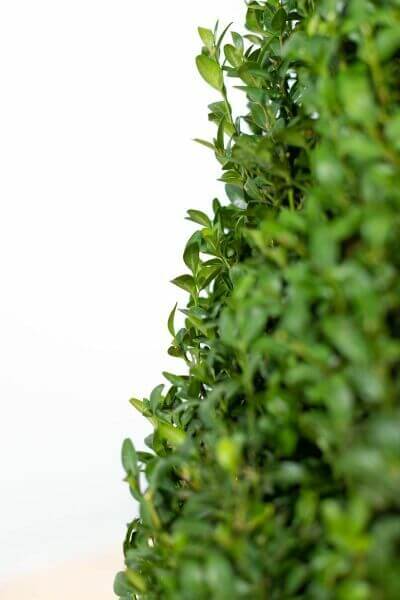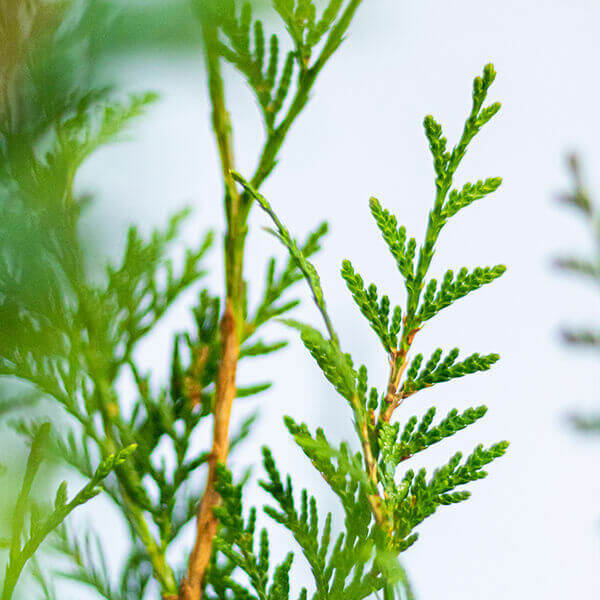Drought-tolerant Hedging Plants
Drought-tolerant Hedging Plants
Blog Article
Best Hedge Plants For Informal Hedges
Improve your garden's attraction with lush hedge ranges such as Yew (Taxus), Thuja, Laurel, Photinia, and Bamboo, commemorated for their structural integrity and ecological advantages.
Yew and Thuja provide evergreen protection and winter strength, while Laurel offers fast development and broad, fragrant leaves.
Photinia includes seasonal beauty with its lively red foliage, and Bamboo provides a low-maintenance, tranquil atmosphere.
These hedges improve air quality, minimize sound, and create tranquil, private areas.
Correct planting, spacing, and maintenance guarantee energetic development and ecological harmony.
Explore how these rich ranges can raise your garden's beauty and wellness.
Key Takeaways
Transform Your Garden With Lush Hedge Ranges
- Select Yew for its thick, evergreen growth and exceptional longevity.
- Select Laurel for its quick growth and broad leaves, guaranteeing fast personal privacy.
- Select Photinia for its dynamic seasonal foliage, which turns a striking dark red.
- Use Bamboo for a low-maintenance, winter-hardy hedge with visual appeal.
- Area plants 2-3 per meter and prune frequently for optimum development and health.
Popular Hedge Plants
When changing a garden with rich hedge varieties, it's vital to consider popular hedge plants such as Yew, Thuja, Laurel, and Photinia due to their unique characteristics and benefits.
Yew (Taxus) is highly esteemed for its longevity and dense, green growth, making it a prime option for enduring landscapes.
Thuja is kept in mind for its evergreen foliage and robust winter strength.
Photinia adds seasonal vibrancy with red leaves that darken gradually, developing dynamic visual appeal.
Laurel offers rapid growth and fragrant, broad leaves, perfect for fast personal privacy.
In Addition, Bamboo is an exceptional choice for ambiance, offering a low-maintenance, winter-hardy option that boosts the garden's visual with its sophisticated, swaying walking sticks.
These selections cater to a range of horticultural requirements and preferences.
Benefits of Garden Hedges
Garden hedges offer a wide range of benefits, making them an important addition to any landscape. These natural barriers are economical to execute and provide substantial wind security, enhancing air blood circulation and adding to sound reduction. The thick foliage of hedges like Thuja and Beech guarantees privacy by blocking exposure, producing a peaceful and secluded environment.
Hedges also play a crucial role in microclimate regulation, providing a stable environment that cultivates plant development and decreases temperature fluctuations. Their intricate leaf structures filter pollutants, enhancing air quality and adding to a healthier garden ecosystem.
Moreover, hedges master sound reduction, soaking up and deflecting sound waves to lower ambient sound levels. This dual performance of supplying both visual and acoustic personal privacy enhances the general tranquility and visual appeal of any garden.
Planting and Maintenance Tips
For an effective hedge, meticulous preparation of the planting area is vital. Guarantee the soil has correct pH and drain to support strong root development.
Space the plants appropriately for the chosen types. Water the hedge frequently throughout its preliminary development stage, changing as needed with seasonal changes.
Carry out a systematic pest control and disease prevention technique, utilizing organic or chemical treatments when necessary. Routinely examine for aphids, mites, and fungal infections.
Apply mulch to keep wetness and reduce weeds. Seasonal pruning promotes thick development and air circulation, important for plant health.
Following these standards will assist you cultivate a lively, well-maintained hedge that boosts the charm of your garden.
Spacing and Cutting Standards
Spacing and Cutting Standards
Correct spacing and trimming are important for cultivating healthy, aesthetically appealing hedges. Appropriate spacing makes sure each plant gets enough nutrients, light, and air flow.
Follow these standards for optimum hedge upkeep:
- Spacing: Position hedge plants 2-3 plants per meter to motivate robust development.
- Pruning Strategies: Routine pruning is essential for keeping wanted hedge height and shape. Trim new growth in summer and cut back older wood during winter.
- Seasonal Care: Adjust cutting methods and schedules according to seasonal requirements to ensure plant health.
- Hedge Height: Regularly display and cut to keep the preferred hedge height and accomplish uniform aesthetic appeals.
Complying with these actions will guarantee your hedge thrives, boosting both the appeal and performance of your garden.
Picking the Right Hedge
Picking the Right Hedge
Picking the proper hedge includes assessing aspects such as mature height, foliage density, and environmental resilience. Effective hedge plant choice needs understanding each types' development attributes and site-specific versatility.
For example, Yew (Taxus) uses exceptional longevity and thick growth, while Thuja is significant for its winter season resilience. hedging plants Furthermore, considering upkeep requirements is important; fast-growing species like Laurel or Privet need regular cutting, whereas low-maintenance choices like Bamboo or Ivy may be more effective for those seeking very little upkeep.
Ecological factors such as soil type, light accessibility, and moisture conditions must also assist the choice procedure. This cautious technique guarantees the selected hedges will thrive, offering both aesthetic and functional benefits to the garden landscape.
Shipment and Planting Guidance
To guarantee your hedge plants thrive, they ought to be provided by specialized carriers and planted immediately upon arrival.
Follow these essential steps for effective planting:
- Soil Preparation: Enrich the soil with organic matter to enhance drainage and nutrient material.
- Planting Depth: Create a trench twice the width and equivalent to the depth of the root ball.
- Watering Methods: Water completely after planting, keeping the soil consistently moist however not saturated.
- Mulching: Apply a layer of mulch to maintain moisture and reduce weeds.
Consumer Support and Service
Given the vital role of timely support in horticultural pursuits, our client assistance group is readily available six days a week through telephone, e-mail, and social networks to use skilled guidance and quickly attend to any issues. Their commitment to fast reaction times guarantees client fulfillment by fixing questions connected to plant health, optimum planting techniques, and upkeep schedules.

6 days a week
This thorough support system, reinforced by an outstanding 9.3/ 10 client score, highlights our commitment to improving the gardening experience for each customer.
Often Asked Concerns
The Length Of Time Does It Take for Hedge Plants to Establish?
Hedge plants typically require one to three years to become fully established, with the exact duration differing by types and growing conditions.
Reliable care throughout this critical duration is necessary for robust development. Consistent watering, watchful weed control, and proper fertilizer application are pivotal in promoting strong root development.
For instance, fast-growing types like Laurel might establish faster, while slower-growing varieties such as Yew may take longer. Thorough upkeep accelerates the establishment procedure, leading to dense and healthy hedges.
What Are the Finest Hedge Plants for Personal Privacy?
The question of the very best hedge plants for personal privacy includes assessing evergreen and deciduous options.
Evergreen hedges like Thuja, Laurel, and Cypress supply year-round protection, guaranteeing continuous personal privacy.
On the other hand, deciduous hedges such as Beech provide seasonal personal privacy, shedding leaves in cooler months.
Secret maintenance ideas for privacy hedges include routine cutting, fertilizing in spring, and proper spacing-- typically 2 to 3 plants per meter.
In addition, consistent watering and diligent weed elimination are important for promoting healthy, dense development.
Can Hedge Plants Draw In Wildlife to My Garden?
Yes, hedge plants can attract wildlife to your garden by supplying important advantages like shelter, food, and nesting sites, thereby improving local biodiversity. For example, yew, holly, and laurel are excellent for attracting birds, while ivy supports a range of bugs.
Nevertheless, it is necessary to keep in mind that there are some disadvantages, such as increased upkeep to manage insects and regular upkeep. Thoroughly choosing and keeping hedge varieties can assist balance these disadvantages and advantages, eventually cultivating a lively and sustainable environment in your garden.
Are There Any Flowering Hedge Plants Available?
Yes, there are flowering hedge plants readily available that can enhance the charm of your garden.
For instance, Elaeagnus, also called Olive Willow, produces aromatic white flowers in the fall, adding a touch of beauty.
Photinia, another popular choice, showcases dynamic red leaves that grow into an abundant green, creating a dynamic visual result throughout the seasons.
To make sure these plants thrive, it's important to practice appropriate pruning strategies and seasonal upkeep, such as cutting brand-new development in the summer season and cutting back in the winter.
These measures will help preserve the health and visual appeal of your flowering hedges.
How Do I Prevent Pests in My Hedge Plants?
To prevent pests in hedge plants, utilize natural bug control methods and maintain correct hedge care. Introduce beneficial insects like ladybugs, which prey on harmful pests, to create a well balanced environment.
Frequently check your hedges for indications of problem and quickly remove any affected parts to prevent the spread. Make sure the health of your hedges by using well balanced fertilizers and offering sufficient water.
Make use of mulching to maintain soil wetness and appropriate spacing to minimize plant stress and promote robust growth. These practices jointly assist in decreasing bug problems and maintaining a healthy hedge.
Conclusion
In essence, choosing the ideal hedge ranges such as Yew, Thuja, and Laurel can transform any garden into a tranquil sanctuary. These plants offer year-round greenery, enhance visual appeal, and offer useful benefits like noise decrease and wind security.
Proper planting strategies, accurate spacing, consistent watering, and seasonal cutting are essential for optimum development.
Reputable shipment services and professional customer assistance ensure a seamless experience from purchase to planting, making it easier than ever to elevate your outside space.
Garden hedges use a wide variety of benefits, making them an important addition to any landscape. These natural barriers are affordable to carry out and offer significant wind defense, enhancing air blood circulation and contributing to noise decrease. The dense foliage of hedges like Thuja and Beech ensures personal privacy by obstructing exposure, creating a secluded and tranquil environment.

Pruning Techniques: Routine pruning is vital for preserving preferred hedge height and shape. Trim brand-new development in summertime and cut back older wood during winter season.
Report this page